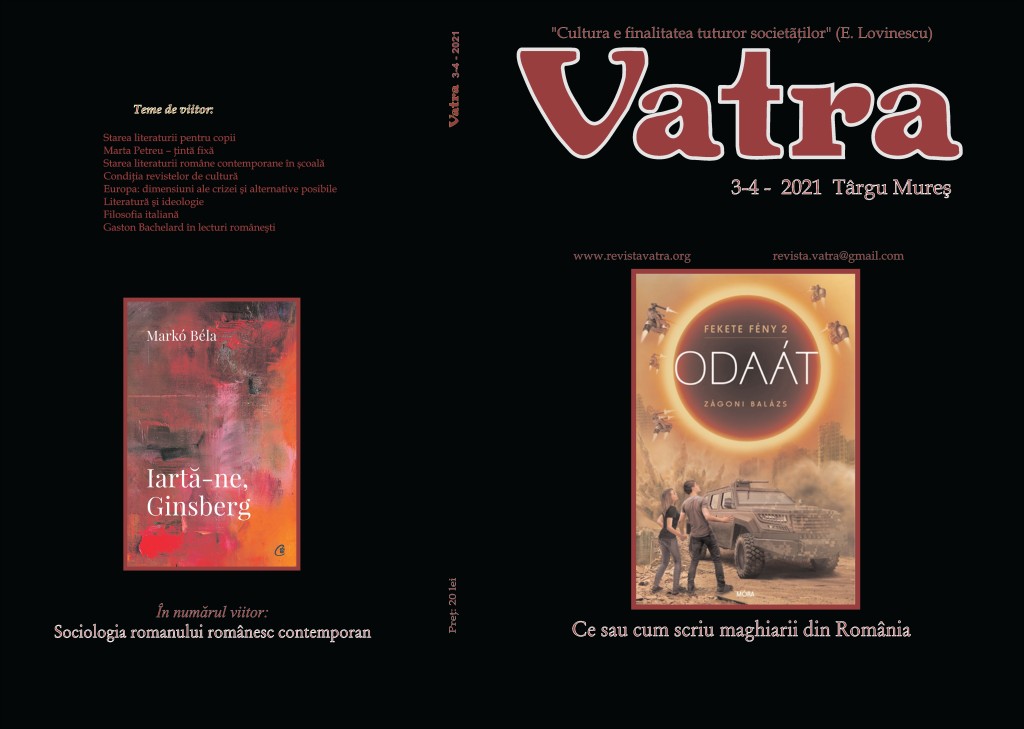
Ce sau cum scriu maghiarii din România
This section contains the thematic part of the issue, a group of literary texts written by Hungarian writers from Romania and theoreticl studies, written by Romanian critics.
More...We kindly inform you that, as long as the subject affiliation of our 300.000+ articles is in progress, you might get unsufficient or no results on your third level or second level search. In this case, please broaden your search criteria.

This section contains the thematic part of the issue, a group of literary texts written by Hungarian writers from Romania and theoreticl studies, written by Romanian critics.
More...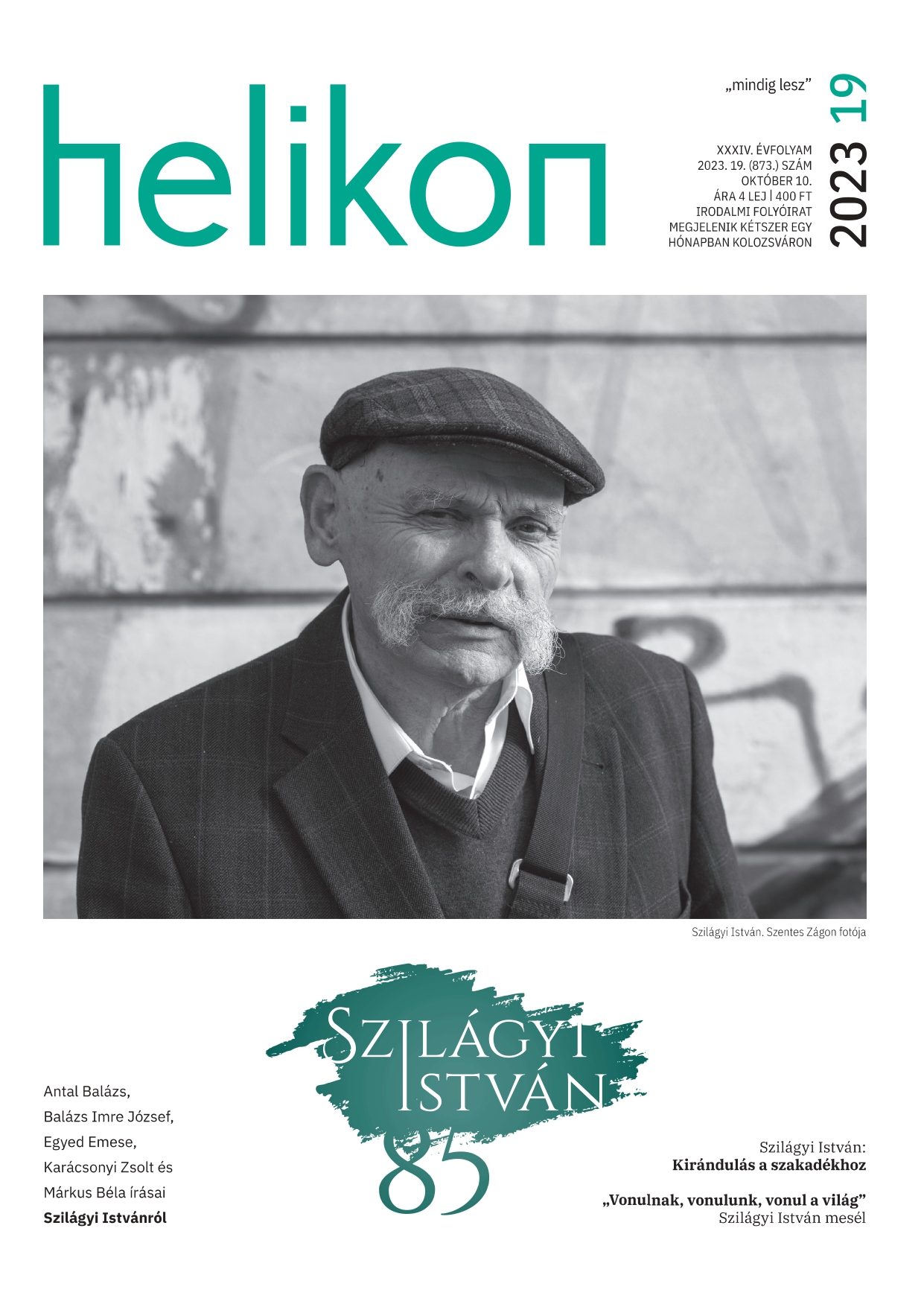
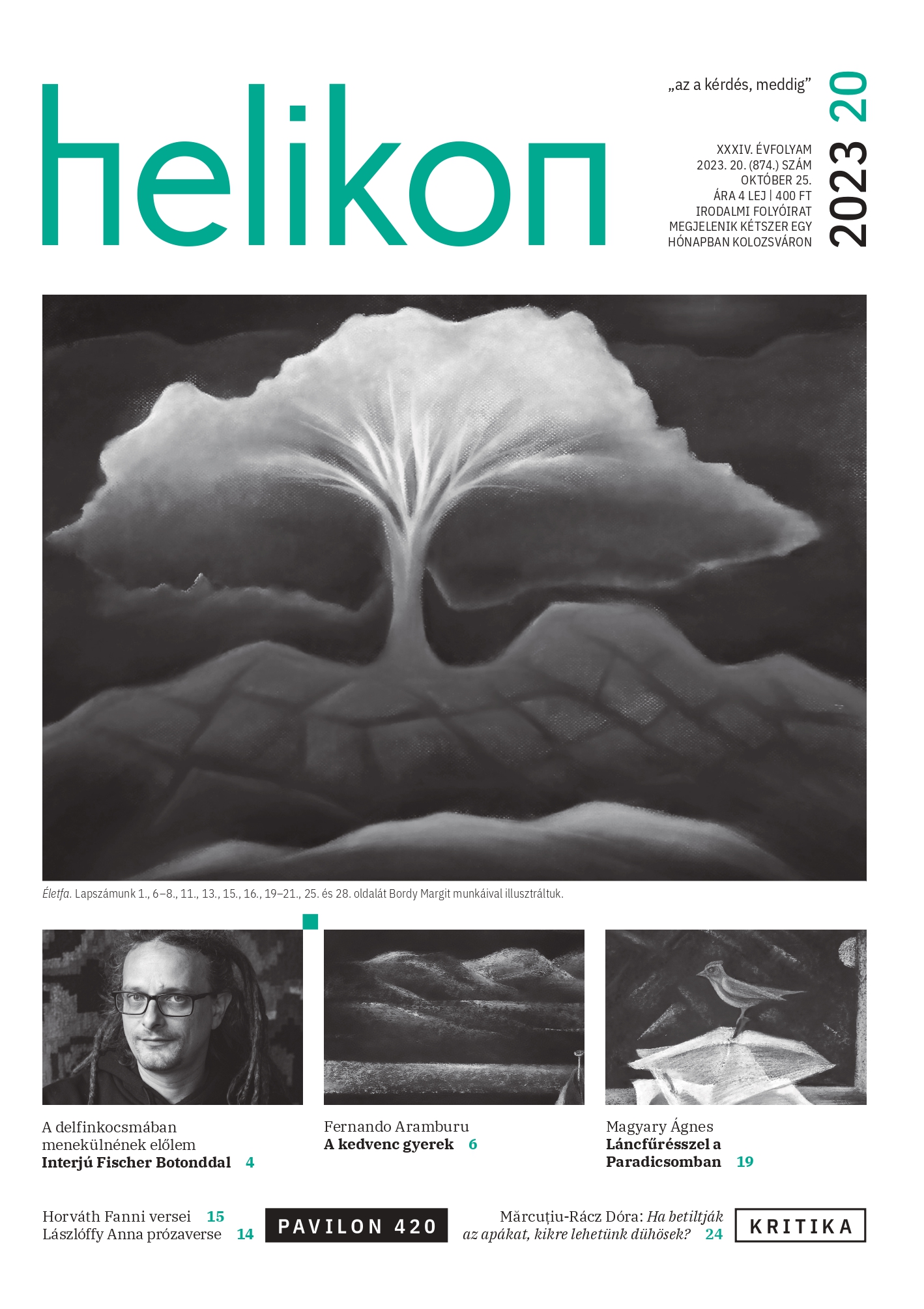
A serie of short stories by Imre Wirth.
More...






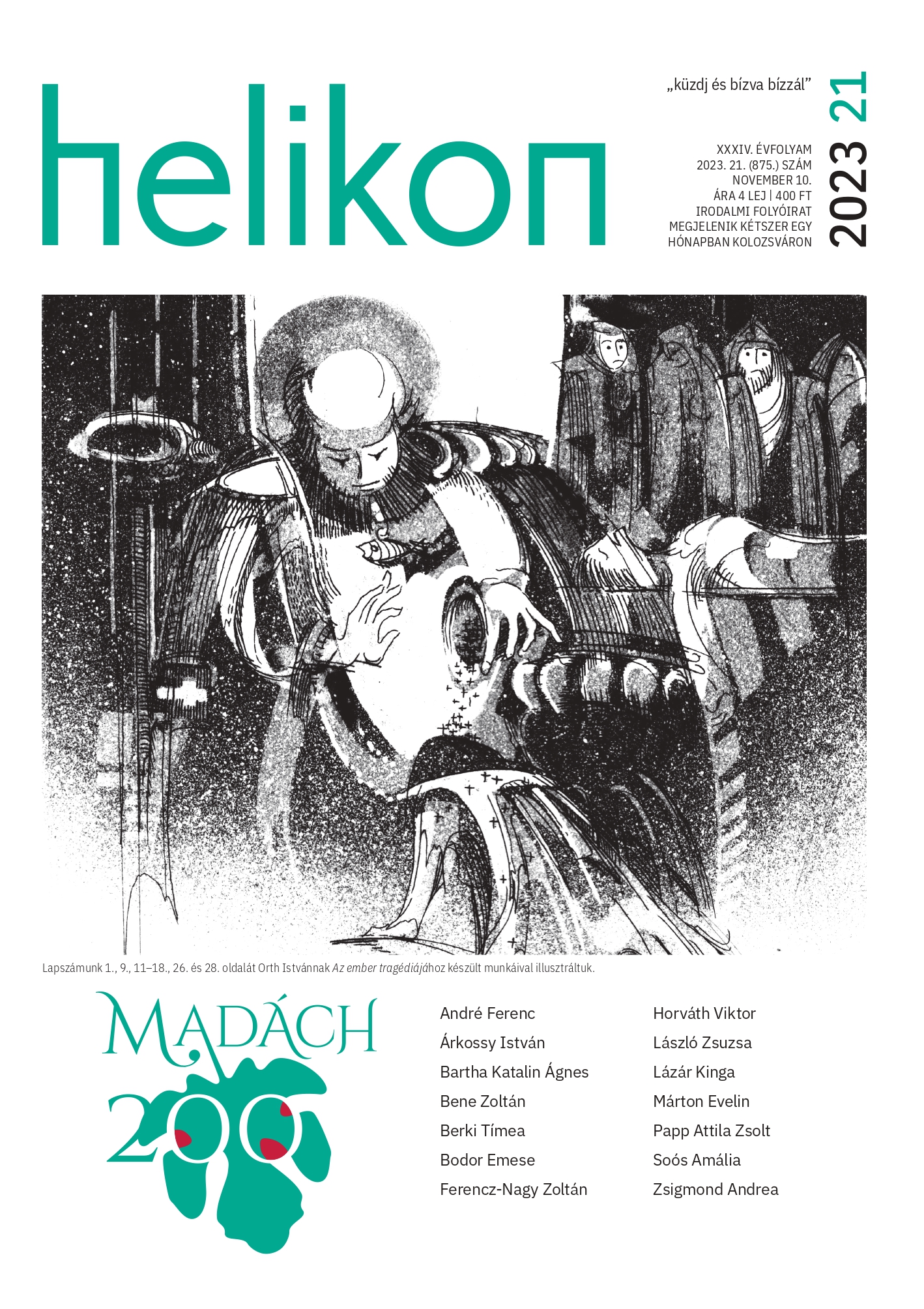


Katalin Ágnes Bartha's article on the premiere of The Tragedy of Man in Cluj Napoca.
More...
Tímea Berki's article on the reception of Imre Madách in Romania.
More...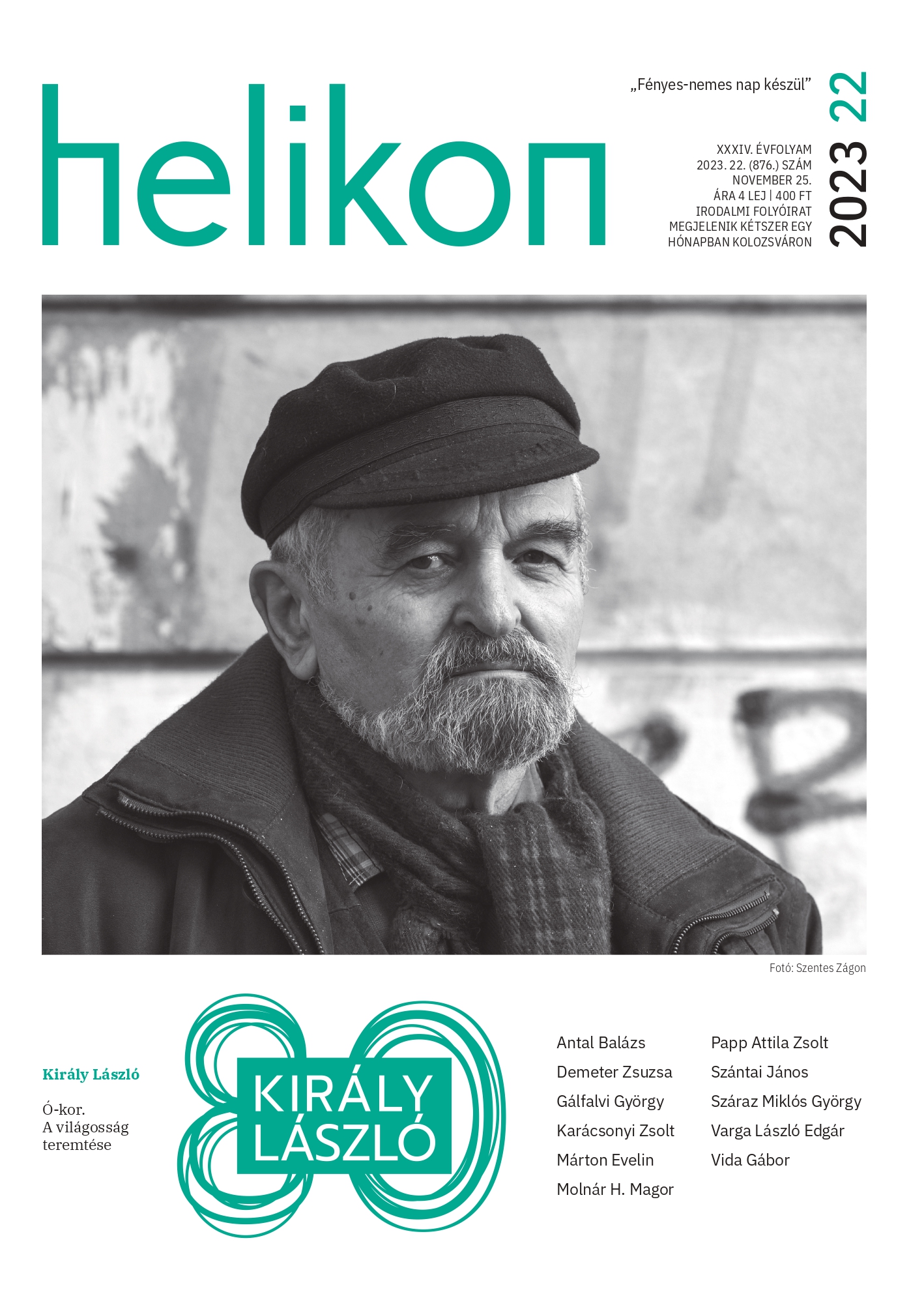
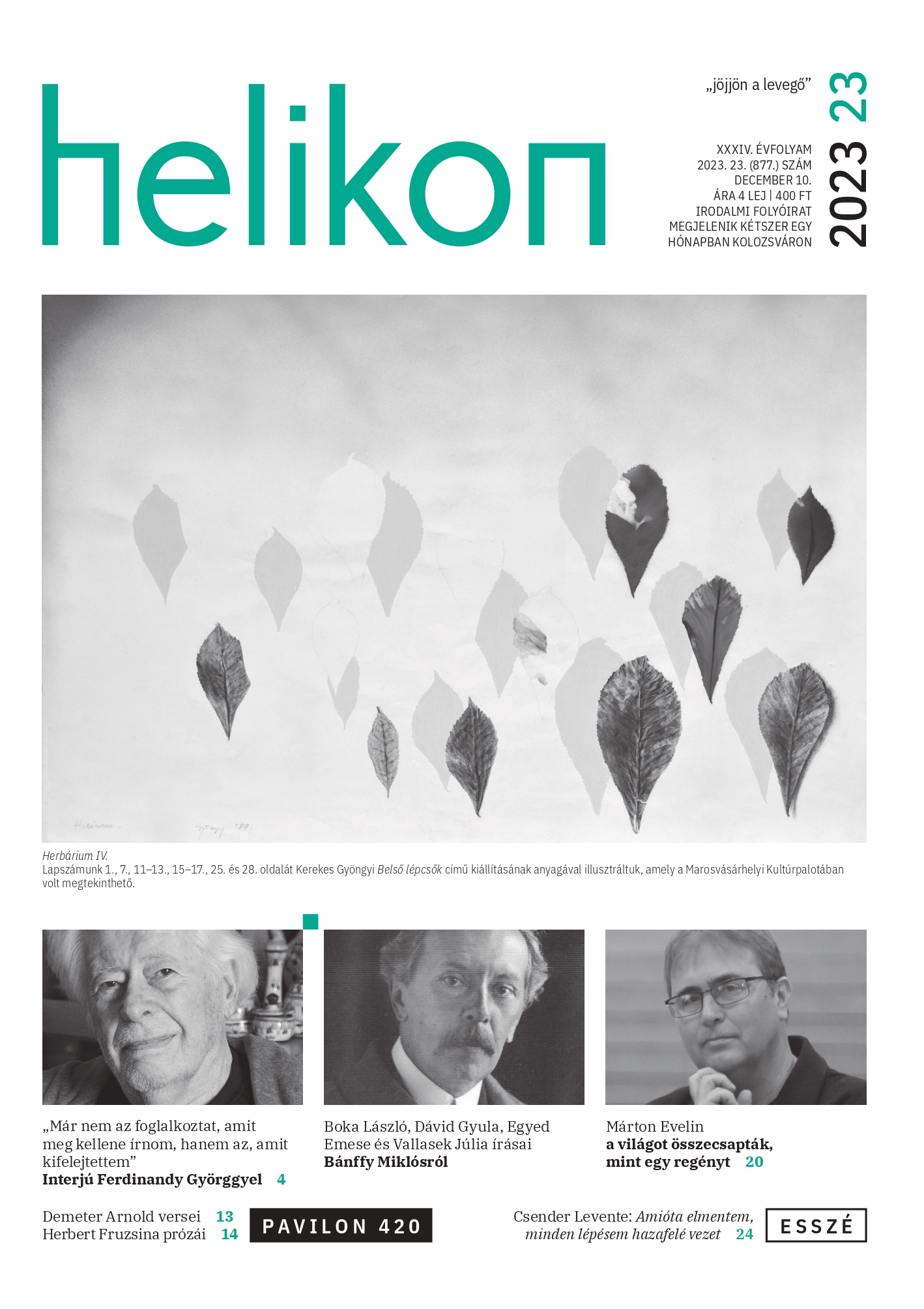

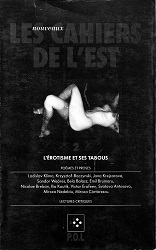

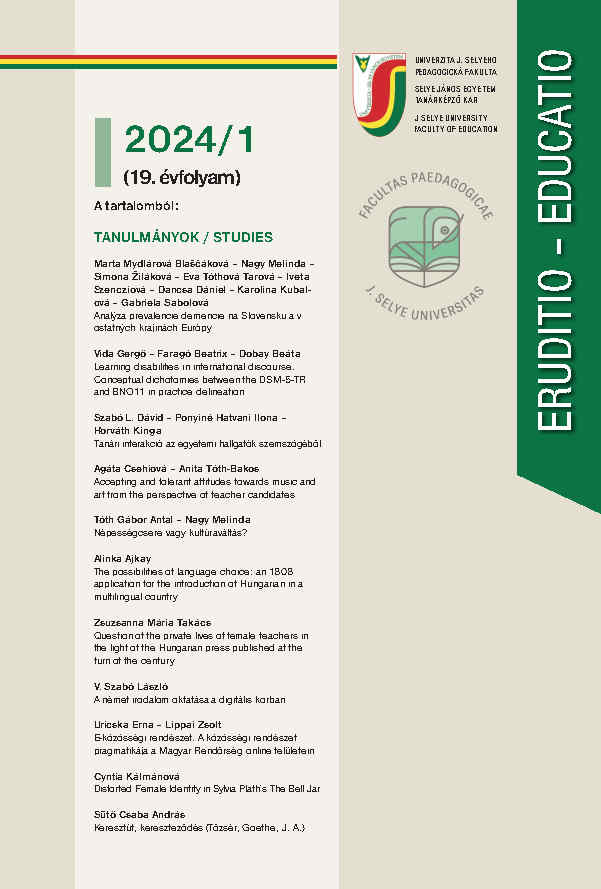
At the turn of the 18th and 19th centuries, Hungary was characterised by ethnic diversity. Nevertheless, for a long time there was no sign of this causing any particular tension. The language of everyday life was characterised by pragmatism, and the language of public life, education and science was uniformly Latin. Joseph II’s language decree of 1784 (which made German the official language instead of Latin) started the process that would culminate in the language decree of 1844, which made Hungarian the official language. In the first decade of the 19th century, there was a revival of the language issue, with the publication of a series of documents on the language. At the Diet of 1807, there were such heated debates about the language that the Viennese court and the secret police thought it would be a good idea to hold a competition to see whether Hungarian was suitable for official use in Hungary. 21 contributions were received for this competition. Almost half of the applicants were from Upper Hungary, all of them Protestants, most of them pastors. They were the founders of one of the earliest scientific-literary societies, Solennia, in 1808. The works of the society’s members were published every year in the journal Solennia, which was published in four languages (Latin, Hungarian, German, Slovak).
More...